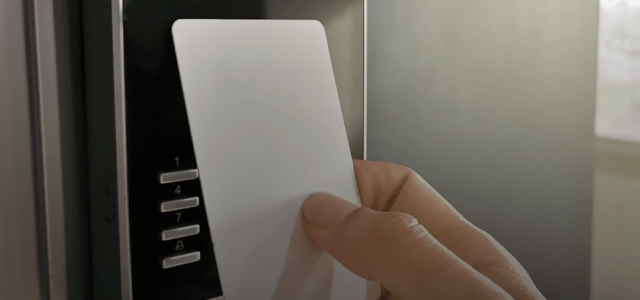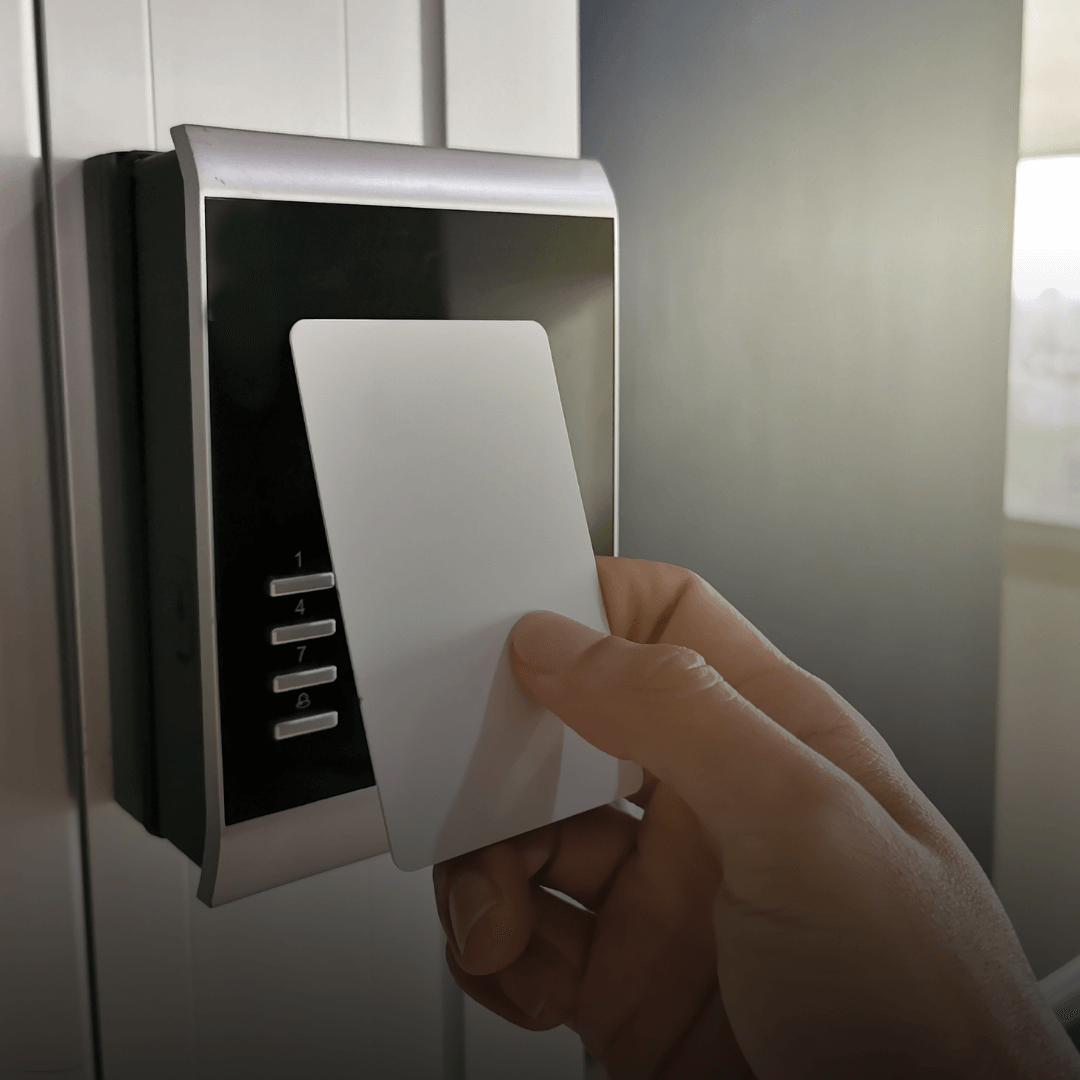Committee Blog: Access Control for Cannabis Businesses – A Complete Guide to the Benefits and How to Get Started
Marijuana Laws, Regulations, & Politics November 13, 2024 MJ Shareholders 0


As the legal cannabis industry continues to grow, the need for stringent security measures becomes increasingly critical. Among these measures, access controls stand out as a fundamental component for safeguarding premises, protecting inventory, and ensuring regulatory compliance.
Cannabis facilities face unique security challenges due to the high value of their products and stringent regulatory requirements. Effective access control systems are essential for mitigating risks such as theft, unauthorized entry, and internal diversion. By regulating access to sensitive areas within a facility, operators can ensure that only authorized personnel can enter cultivation rooms, processing areas, and vaults.
Additionally, access controls are often mandated by regulatory bodies to prevent the diversion of cannabis products to the black market and to protect public safety. Non-compliance can result in severe penalties, including fines, license suspension, or revocation.
Types of Access Control
Cannabis facilities must implement robust access control systems to address several critical security concerns. These include theft prevention, regulatory compliance, and internal security. High-value cannabis products are prime targets for theft, and access controls help prevent unauthorized individuals from entering sensitive areas. Many jurisdictions require cannabis facilities to have stringent access controls to prevent product diversion and ensure public safety. Access controls also help mitigate risks of internal diversion by restricting employee access to specific areas based on their roles and responsibilities.
There are several types of access control systems available for cannabis facilities:
- Physical barriers such as fences, gates, and security doors serve as the first line of defense, deterring unauthorized entry. These barriers can be supplemented with security personnel for added protection.
- Electronic access control systems use electronic credentials, such as key cards, fobs, or biometric identifiers (fingerprints, facial recognition), to grant or deny access. They offer the flexibility to manage and monitor access remotely. Integrating access control systems with video surveillance allows for real-time monitoring and recording of entry points, providing evidence in case of security breaches.
- Sensors and alarms in intrusion detection systems detect unauthorized access attempts and alert security personnel immediately. These systems are often integrated with access controls to provide a comprehensive security solution.
Designing an Effective Access Control Solution
Implementing access controls effectively requires following best practices. Conducting a thorough risk assessment identifies potential vulnerabilities and determines the appropriate level of security needed for different areas within the facility. Employing a multi-layered security strategy that combines physical barriers, electronic access control, video surveillance, and intrusion detection provides multiple lines of defense.
Regular updates and maintenance ensures that access control systems function correctly, including software updates, hardware inspections, and system audits.
Developing and enforcing strict access policies that define who can access which areas and under what conditions is crucial, and employee training on these policies is essential for compliance.
Regularly reviewing access logs helps monitor for unusual activity or patterns that may indicate security issues. Auditing access logs can identify potential internal threats and ensure regulatory compliance. Integrating access control systems with other security measures, such as alarm systems and video surveillance, allows for a coordinated response to security incidents and enhances overall security.
In addition to these measures, it is important to consider the human element in security. Employees should be thoroughly vetted during the hiring process, including background checks and reference verification. Continuous training and education on security protocols and the importance of access controls can help foster a culture of security awareness within the organization. Employees should be encouraged to report any suspicious activity or potential security breaches immediately.
Furthermore, technology advancements in access control systems can provide additional layers of security. For instance, biometric systems that use facial recognition or fingerprint scanning offer higher security levels compared to traditional key cards or fobs. These systems are harder to duplicate or steal, reducing the risk of unauthorized access. Additionally, integrating access control systems with advanced analytics can help identify patterns and predict potential security threats before they occur.
Emergency Preparedness
Another critical aspect of access control is emergency preparedness. Facilities should have clear protocols in place for responding to security incidents, such as break-ins or attempted thefts. This includes having a designated security team, clear communication channels, and regular drills to ensure that all employees know how to respond in an emergency. Access control systems should also be designed to allow for quick lockdowns of the facility in case of a security breach.
Regular audits and assessments of the access control systems are essential to ensure they remain effective and up to date. This includes reviewing access logs, testing the functionality of the systems, and making necessary updates or improvements. Engaging with security experts or consultants can provide valuable insights and recommendations for enhancing the security measures in place.
As the cannabis industry continues to expand, the implementation of robust access control systems is essential for ensuring the security of facilities, protecting valuable inventory, and maintaining regulatory compliance. By adopting best practices and leveraging advanced technologies, cannabis operators can create a secure environment that safeguards their assets and supports the industry’s growth. The integration of physical, electronic, and human elements in access control strategies will be key to addressing the unique security challenges faced by cannabis facilities. Through continuous improvement and adaptation to emerging threats, the industry can achieve a high standard of security and operational integrity.
Enhancing Operational Efficiencies
The role of access control systems extends beyond mere security. These systems can also enhance operational efficiency by streamlining access management and reducing the administrative burden associated with manual security checks. For example, electronic access control systems can automatically log entry and exit times, providing valuable data for workforce management and operational planning. This data can be used to optimize staffing levels, improve workflow efficiency, and ensure that security protocols are being followed consistently.
In addition, access control systems can be integrated with other facility management systems to create a cohesive and comprehensive security infrastructure. For instance, integrating access control with environmental monitoring systems can help ensure that cultivation areas maintain optimal conditions for plant growth. Similarly, integration with inventory management systems can provide real-time tracking of cannabis products, reducing the risk of loss or diversion.
The future of access control in the cannabis industry will likely see increased adoption of advanced technologies such as artificial intelligence (AI) and machine learning. These technologies can enhance the capabilities of access control systems by enabling predictive analytics, automated threat detection, and real-time decision-making. For example, AI-powered systems can analyze access patterns to identify anomalies that may indicate a security threat, allowing for proactive measures to be taken before an incident occurs.
Conclusion
As the cannabis industry continues to evolve, the importance of robust access control systems cannot be overstated. These systems are essential for protecting valuable assets, ensuring regulatory compliance, and maintaining a secure and efficient operational environment. By embracing best practices and leveraging advanced technologies, cannabis operators can build a resilient security infrastructure that supports the industry’s growth and success. Through continuous innovation and adaptation, the cannabis industry can set a high standard for security and operational excellence, paving the way for a sustainable and prosperous future.
MJ Shareholders
MJShareholders.com is the largest dedicated financial network and leading corporate communications firm serving the legal cannabis industry. Our network aims to connect public marijuana companies with these focused cannabis audiences across the US and Canada that are critical for growth: Short and long term cannabis investors Active funding sources Mainstream media Business leaders Cannabis consumers










No comments so far.
Be first to leave comment below.